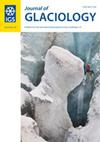俄罗斯高北极Severnaya Zemlya冰川变化遥感(1965–2021)和浪涌型冰川识别
IF 2.6
3区 地球科学
Q2 GEOGRAPHY, PHYSICAL
引用次数: 1
摘要
由于巴伦支-卡拉海地区的大气和海洋变暖,俄罗斯高北极地区的冰川质量加速流失。大多数研究都集中在巴伦支-卡拉西部地区,尽管有证据表明东部的塞维纳亚-泽姆利亚地区的质量损失正在加速。然而,Severnaya Zemlya冰川变化的长期趋势在很大程度上是未知的,这一记录可能因浪涌型冰川而变得复杂。在这里,我们使用解密的间谍卫星照片(KH-7/9 Hexagon)和光学卫星图像(ASTER、Sentinel-2A、Landsat-4/5 TM和8 OLI)对Severnaya Zemlya的冰川变化(1965–2021)进行了长期评估,并对浪涌型冰川进行了新的清查。冰川面积从1965年的17053平方公里减少到2021年的16275平方公里(−5%;平均值:−18%,最大值:−100%),面积收缩最明显的是塞维纳亚-泽姆利亚南部的陆地冰川,那里的夏季大气温度最近(2010年代后)有所上升。我们发现,涌浪可能比之前想象的更为广泛,有三座冰川被确认为涌浪型,八座冰川有可能涌浪,九座冰川可能涌潮,占Severnaya Zemlya 190座冰川的11%(按面积计算为37%)。在持续变暖的情况下,我们预计随着基础热状态的变化,消退的速度会加快,激增的可能性也会增加。本文章由计算机程序翻译,如有差异,请以英文原文为准。
Remote sensing of glacier change (1965–2021) and identification of surge-type glaciers on Severnaya Zemlya, Russian High Arctic
Glaciers in the Russian High Arctic have undergone accelerated mass loss due to atmospheric and oceanic warming in the Barents–Kara Sea region. Most studies have concentrated on the western Barents–Kara sector, despite evidence of accelerating mass loss as far east as Severnaya Zemlya. However, long-term trends in glacier change on Severnaya Zemlya are largely unknown and this record may be complicated by surge-type glaciers. Here, we present a long-term assessment of glacier change (1965–2021) on Severnaya Zemlya and a new inventory of surge-type glaciers using declassified spy-satellite photography (KH-7/9 Hexagon) and optical satellite imagery (ASTER, Sentinel-2A, Landsat-4/5 TM and 8 OLI). Glacier area reduced from 17 053 km2 in 1965 to 16 275 in 2021 (−5%; mean: −18%, max: −100%), with areal shrinkage most pronounced at land-terminating glaciers on southern Severnaya Zemlya, where there is a recent (post-2010s) increase in summer atmospheric temperatures. We find that surging may be more widespread than previously thought, with three glaciers classified confirmed as surge-type, eight as likely to have surged and nine as possible, comprising 11% of Severnaya Zemlya's 190 glaciers (37% by area). Under continued warming, we anticipate accelerated retreat and increased likelihood of surging as basal thermal regimes shift.
求助全文
通过发布文献求助,成功后即可免费获取论文全文。
去求助
来源期刊

Journal of Glaciology
地学-地球科学综合
CiteScore
5.80
自引率
14.70%
发文量
101
审稿时长
6 months
期刊介绍:
Journal of Glaciology publishes original scientific articles and letters in any aspect of glaciology- the study of ice. Studies of natural, artificial, and extraterrestrial ice and snow, as well as interactions between ice, snow and the atmospheric, oceanic and subglacial environment are all eligible. They may be based on field work, remote sensing, laboratory investigations, theoretical analysis or numerical modelling, or may report on newly developed glaciological instruments. Subjects covered recently in the Journal have included palaeoclimatology and the chemistry of the atmosphere as revealed in ice cores; theoretical and applied physics and chemistry of ice; the dynamics of glaciers and ice sheets, and changes in their extent and mass under climatic forcing; glacier energy balances at all scales; glacial landforms, and glaciers as geomorphic agents; snow science in all its aspects; ice as a host for surface and subglacial ecosystems; sea ice, icebergs and lake ice; and avalanche dynamics and other glacial hazards to human activity. Studies of permafrost and of ice in the Earth’s atmosphere are also within the domain of the Journal, as are interdisciplinary applications to engineering, biological, and social sciences, and studies in the history of glaciology.
 求助内容:
求助内容: 应助结果提醒方式:
应助结果提醒方式:


